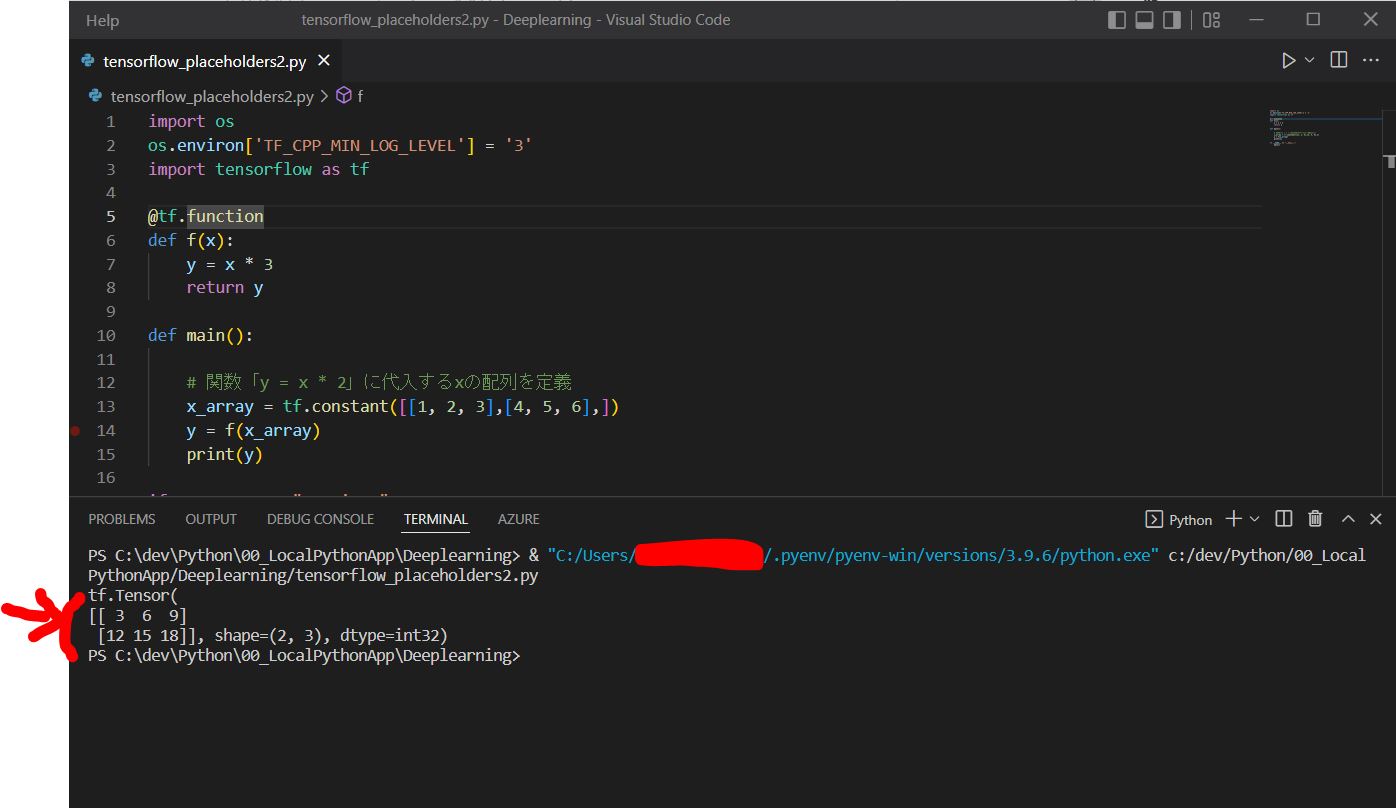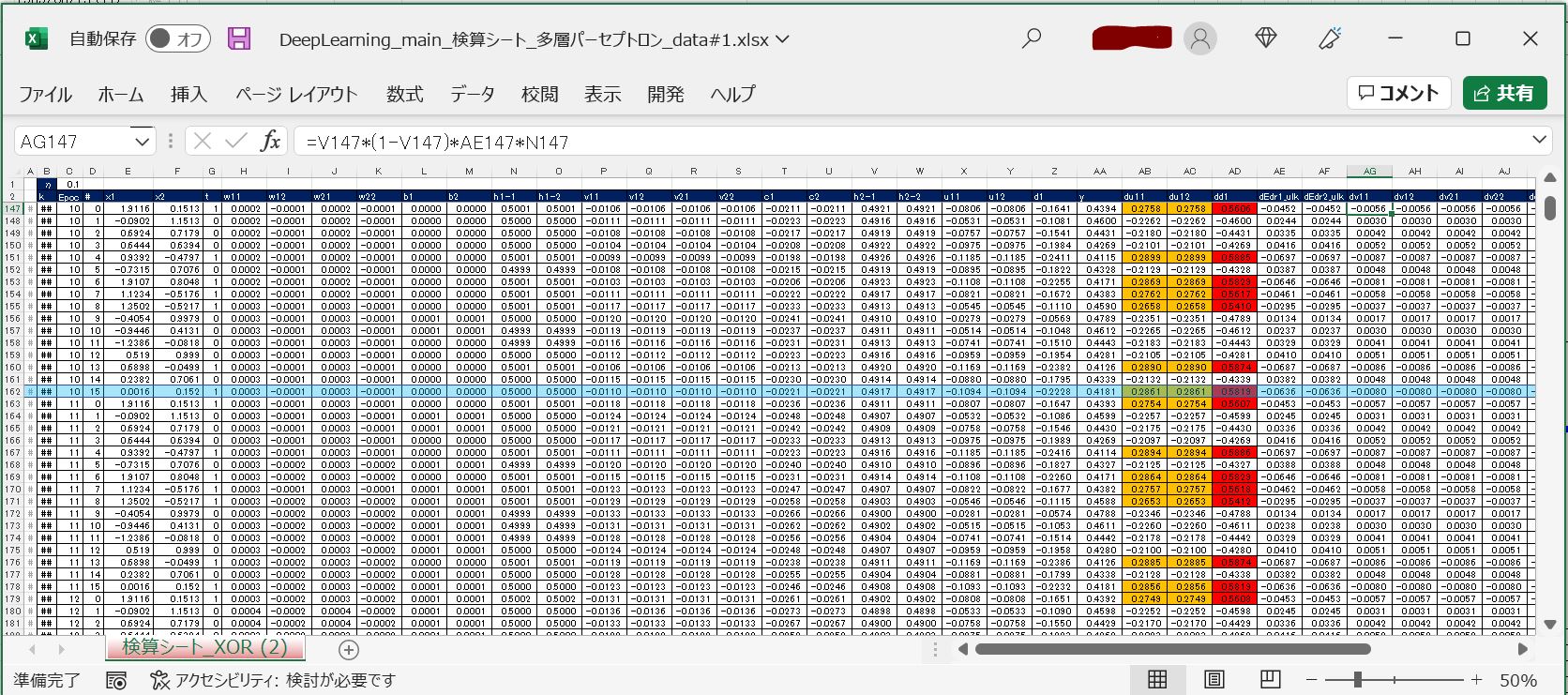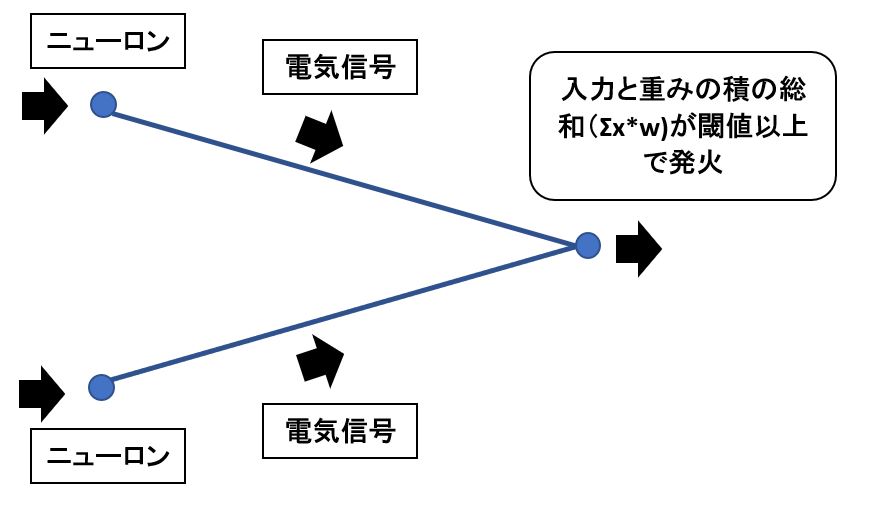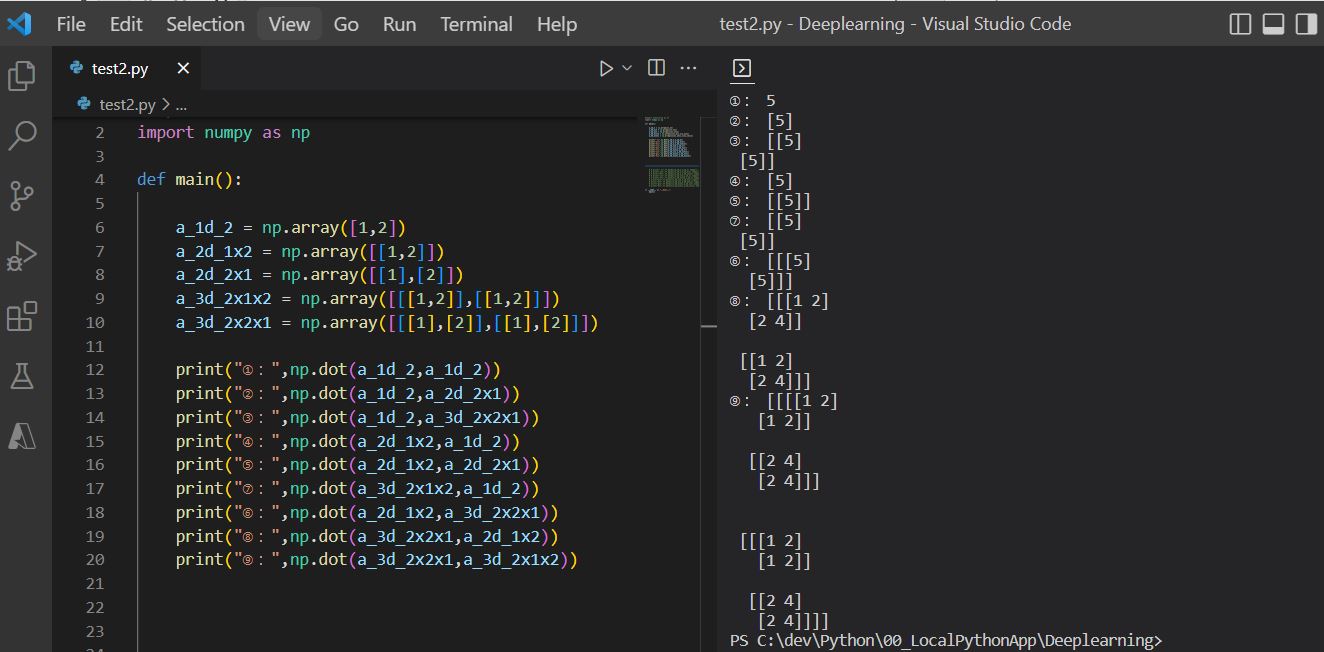<目次>
(1) Tensorflowにおけるplaceholderとは?v2.0以降での置き換え
(1-1) 「placeholder」とは
(1-2) サンプルプログラム
(1-3) Variableとの違いは?
(1-4) TensorFlow 2.0以降における置きかえ
(1) Tensorflowにおけるplaceholderとは?v2.0以降での置き換え
(1-1) 「placeholder」とは
import os
os.environ['TF_CPP_MIN_LOG_LEVEL'] = '3'
import tensorflow.compat.v1 as tf
tf.disable_v2_behavior()
# placeholderを使って、先に関数を組み立て
# この時点ではまだxには値は代入されていない
# またxのサイズはNoneを指定し、後からdictionaryで任意のサイズを指定可能に
x = tf.placeholder("float", None)
y = x * 3
with tf.Session() as session:
# 関数「y = x * 2」にx = 1,2,3を代入し、それぞれの結果を表示
# ⇒グラフの一部の領域に対して計算を実行できる
result = session.run(y, feed_dict={x: [1, 2, 3]})
print(result)
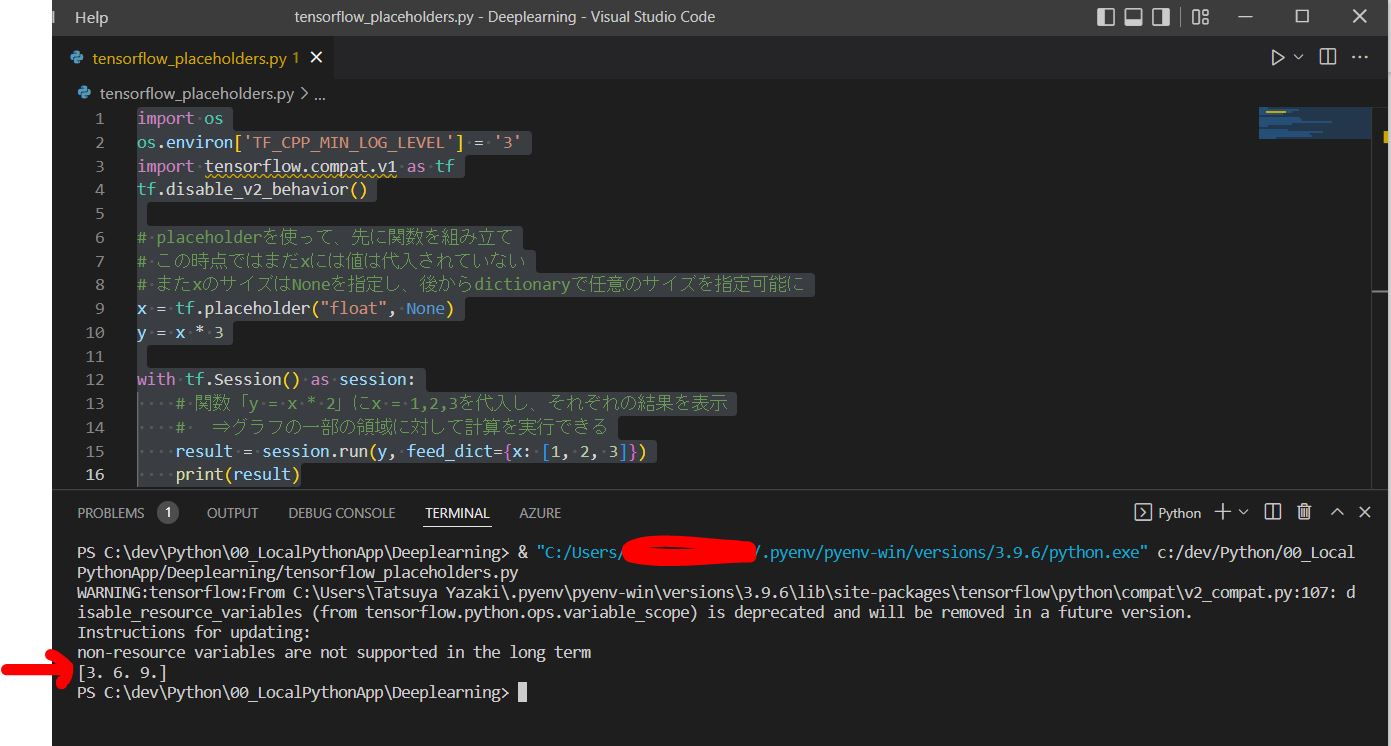
(1-2) 「placeholder」は多次元にもできる
import os
os.environ['TF_CPP_MIN_LOG_LEVEL'] = '3'
import tensorflow.compat.v1 as tf
tf.disable_v2_behavior()
# placeholderを使って、先に関数を組み立て
# この時点ではまだxには値は代入されていない
# またxのサイズは[None,3]を指定し、N行×3列のデータを後からdictionaryで指定可能に
x = tf.placeholder("float", [None,3])
y = x * 3
with tf.Session() as session:
# 関数「y = x * 2」に代入するxの配列を定義
x_array = [[1, 2, 3],
[4, 5, 6],]
result = session.run(y, feed_dict={x: x_array})
print(result)
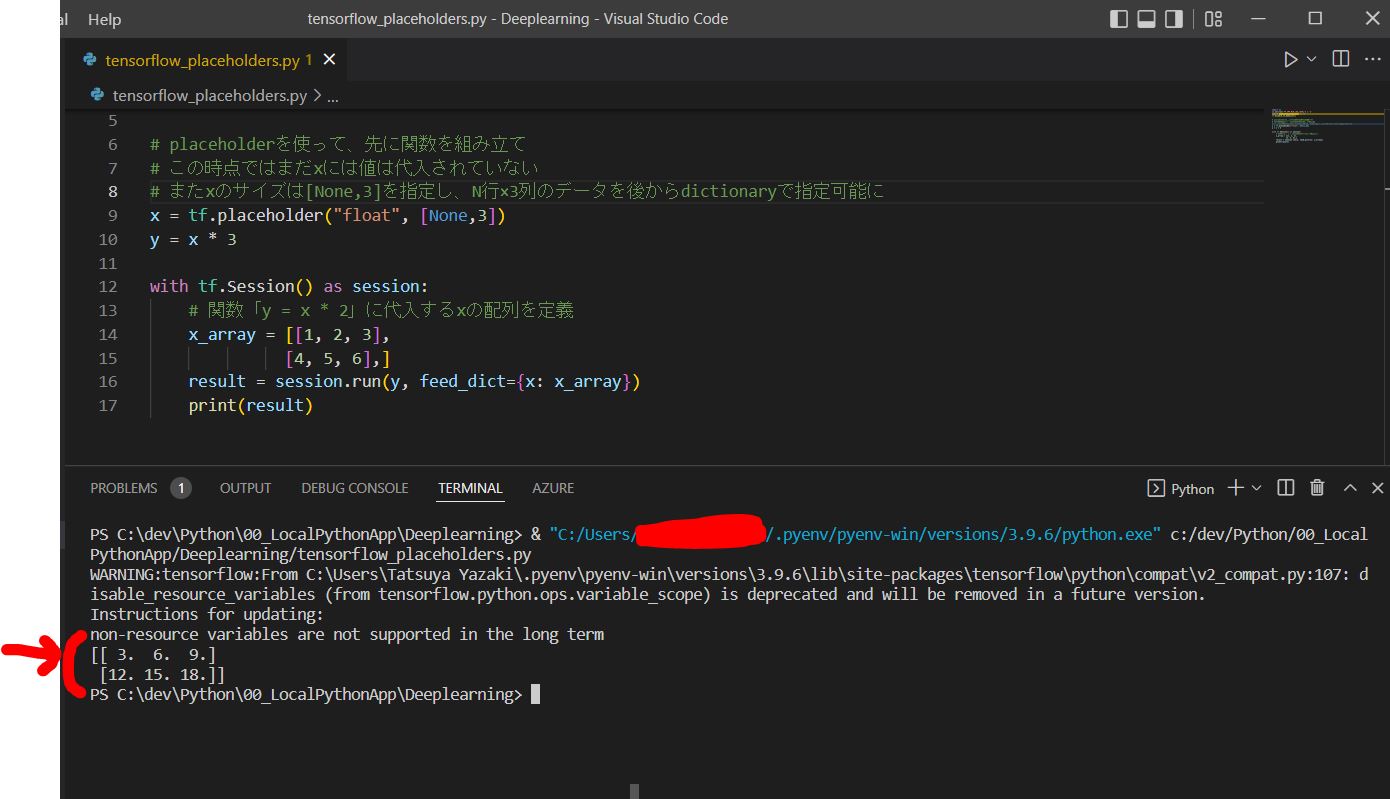
(1-3) Variableとの違いは?
●tf.Variable
●tf.placeholder
(1-4) TensorFlow 2.0以降における置きかえ
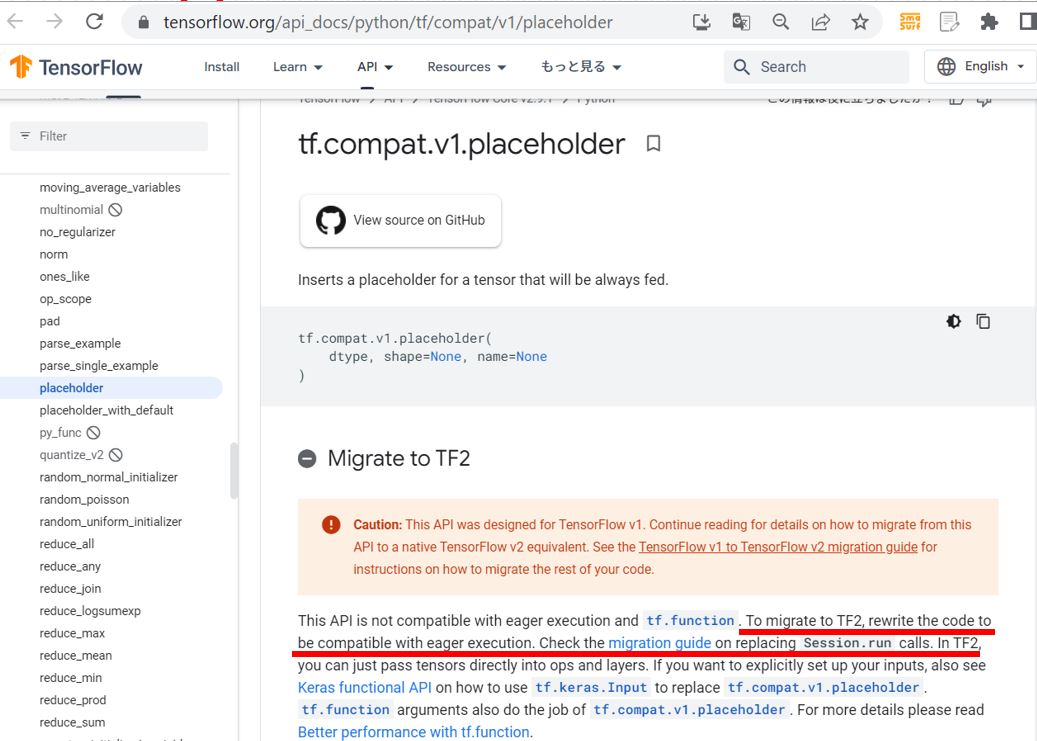
import os
os.environ['TF_CPP_MIN_LOG_LEVEL'] = '3'
import tensorflow as tf
@tf.function
def f(x):
y = x * 3
return y
def main():
# 関数「y = x * 2」に代入するxの配列を定義
x_array = tf.constant([[1, 2, 3],[4, 5, 6],])
y = f(x_array)
print(y)
if __name__ == "__main__":
main()
tf.Tensor( [[ 3 6 9] [12 15 18]], shape=(2, 3), dtype=int32)
